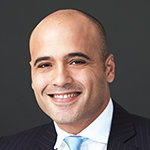Is now the time for emerging markets?

|
Written By: Matthew Craig |
Matthew Craig looks at the use of alternative assets by LGPS funds and shows how they have become an essential component of the funds’ investment strategies
Emerging markets (EM) make up 55% of the world’s gross domestic product (GDP), as measured by purchasing power parity, but have a far lower share of most investor’s portfolios, of around 10% or less in many cases.
However, it is important to add the caveat that assets such as developed market equities contain exposure to emerging markets, through European carmakers exporting to China, or global consumer goods companies increasing sales in Africa. In any event, the benefits of emerging markets are not in doubt for investors. Whether it is through bonds, equities, or alternative assets, such as private equity or infrastructure, emerging market assets provide valuable growth and diversification benefits. In the last two decades, the largest emerging markets, such as Brazil, India and China have been powerful drivers of global growth, as their populations have increased and their economies have developed. China, in particular, has sucked in raw materials from countries around it and manufactured goods from around the world, as it has industrialised. Indeed, China’s growth has alarmed some; the USA, under President Trump, is engaged in a trade row with China, as it bids to become the world’s dominant economic power, ahead of the USA. While it is worrying, it also shows how emerging market economies are fully integrated into the global economy.
From the point of view of many investors, emerging markets now look attractively priced. Pictet Asset Management chief strategist, Luca Paolini, commented recently: “Emerging market assets are in a sweet spot. EM currencies are the cheapest they have been for at least two decades relative to the US dollar. Our analysis shows that investors remain lightly invested in emerging equities despite a rally that leaves them up almost 10% year to date.” He added that emerging market fundamentals remain sound, as most countries now follow prudent fiscal and monetary policies.
The role of China is increasingly important to emerging markets as a whole, Paolini explained. “China’s reflationary policies should boost exports and commodities. Chinese and Russian shares are particularly attractive while the Brazilian market is looking very expensive,” he commented. Paolini added: “Despite the US-China trade spat triggering a slowdown in global exports and a deterioration in business sentiment, emerging economies are faring better than their developed counterparts – thanks in part to China’s monetary and fiscal stimulus.”
The attractiveness of emerging markets at present is a theme taken up by investment data provider eVestment, which found in February this year that emerging markets were of high interest to investors and consultants. It found that the global emerging markets’ all cap core equity universe was the most viewed equity strategy in the month, with an emerging market equity product the most viewed product.
For UK local authority pension funds, the interest in emerging markets comes as many are reconsidering their strategies as asset pooling takes place. The Brunel Pension Partnership represents 10 funds from the LGPS and the Environment Agency, based in the South-West of England. Brunel’s CIO, Mark Mansley, commented: “Under Brunel, our LGPS client funds have chosen what they want to see as core products. After some discussion, they decided they do want the option to make separate allocations to emerging markets. Our clients have agreed an EM specification, which covers portfolio objectives, performance targets, and investment strategy.”
Given the breadth and diversity of the emerging market equities universe, many investors feel the best way to invest is to give a manager a global mandate, so that they have the freedom to make geographical decisions. Mansley concurs with this approach, saying: “We’re not targeting particular geographic areas. Emerging market regions are not homogenous to each other – a breadth of skills are required as they evolve and develop over time, and therefore we expect our asset managers to take a flexible approach and adapt to these changes to ensure the strongest possible long-term results.”
While many investors might take a global view of emerging markets, in other cases some investors are looking at countries such as India, China or even regions such as sub-Saharan Africa, as investment themes. This is particularly the case for very large asset owners, such as the big Canadian pension funds or big sovereign wealth funds, which can invest directly in Indian or Chinese infrastructure, or open an office in a particular region. The UK’s LGPS asset pools are not yet in this category, but might reach it over time. Alternatively, they might decide to work together to create the economies of scale needed to become a large direct investor in the emerging markets world.
Another way that could lead LGPS funds to invest more in particular emerging market is if it becomes easier or more efficient to do so. A case in point is the recent decision by index provider MSCI to increase China A-shares from 5% to 20% in its indices. This led Michelle Qi, chief investment officer, China, at Eastspring Investments, to comment: “The implication is that there will be increasing allocation demand from global asset managers in the next few years and the presence of foreign institutional investors will be strengthened.” She added that A-shares will rise to 3.3% of the MSCI emerging market index, which is estimated to lead to inflows of $70-80 billion in 2019 and even more in 2020.
Another issue for investors in emerging markets is currency risk. Emerging market currencies are more volatile than those in developed markets, which can add risk for investors. This currency risk can be hedged either passively, actively or systematically, depending on an investor’s approach. While passive hedging reduces volatility, it adds costs, while systematic or active hedging strategies aim to hedge against downside risks at certain times, but also to take advantage of EM currency movements as a potential source of returns at other times.
Another alternative, according to Record Currency Management associate director, Andrew Bloomfield, is to use what he calls “EM diversification”. “This approach embraces the long-term return potential of EM currency exposure and is most appropriate for investors who recognise the rewarded risks embedded in EM currency, but prefer a more diverse and efficient currency allocation than that imposed by underlying equity investments. EM diversification optimises, rather than hedges out, EM currency risk,” Bloomfield said.
In the future, LGPS funds will seek to manage the various risks involved in emerging markets, including the environmental, social and governance (ESG) factors. Brunel’s CIO, Mark Mansley, commented: “We recognise that Environmental, Social and Governance (ESG) is particularly important in emerging markets investing. Emerging markets are traditionally associated with poorer ESG standards, specifically about governance. However, we believe active managers have the ability to identify good ESG practices within companies. With growing expectations on ESG matters, there is increasing potential for ESG factors to add value. Quite simply, we have faith in the managers we appoint to navigate these issues and build portfolios that are less sensitive to ESG-related risks.”
ESG is becoming a factor for other LGPS managers. LGPS Central recently selected three managers for its emerging markets equity active multi-manager fund; BMO Global Asset Management, UBS Asset Management and Vontobel Asset Management. One of the winning managers, Paul Myles, director of UK institutional business at BMO, commented: “We believe both our long-term investment philosophy and commitment to engagement with companies on ESG issues align with the beliefs of LGPS Central and are fundamental for investment risks to be rewarded.”
The creation of the United Nations sustainable development goals (SDGs) adds another tool for investors to use when applying ESG in emerging markets. The SDGs are intended to help with making a more sustainable future for all by 2030, and while they do not necessarily translate into investment objectives, investors can make use of them. One way of doing this is to use SDGs for positive impact investing, by putting assets into funds which targets specific SDGs. Two very large Dutch investors, APG and PGGM, have also used the SDGs to create sustainable development indices, which assess companies for their positive influence on people and the environment. In this way, they believe that they can bridge the gap between broad, high-level SDGs and tangible investment opportunities.
One issue for applying ESG in emerging markets is the availability of the appropriate data. This is likely to improve in the future, as more effort is put into this by managers and analysts and as emerging market companies and governments realise that better ESG data will encourage outside investment. At present though, it could be said to be an area where investors should not let the perfect be an enemy of the good.
In conclusion, we can see that emerging market investing is probably, if not definitely, more important than ever to LGPS investors. This is not necessarily measured by direct allocations to the emerging markets, but more through the impact that emerging markets now have on the global economy. The increasing importance of ESG also means that investors are looking at new emerging markets in search of suitable opportunities. While in the last decade or so investors have got to know emerging markets, it is in the future that we can expect to see the relationship move to the next level, as emerging markets become bigger, more sophisticated and more willing to adapt to the demands of investors, as they seek outside capital.
More Related Content...
|
|
|





